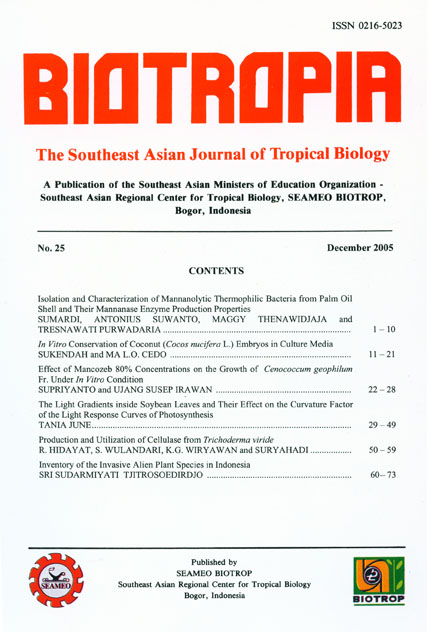
Tags
PRODUCTION AND UTILIZATION OF CELLULASE FROM TRICHODERMA VIRIDE
Content Language : English

An appropriate preservation technology for forage such as silage needs to be developed in order to
overcome the shortage of tropical forage during the dry season. A good quality of silage is obtained by
decreasing the fibre contents (Neutral Detergent Fibre, Acid Detergent Fibre and lignin). The research
was conducted in two stages: 1). Production and activity test of crude enzymes from Trichoderma viride
and 2). Comparative test using crude enzymes from Trichoderma viride strain QM 9414 (CETV) and
commercial cellulase (Cellulase “Onozuka
R-10”, heidelberg) on rice straw silage. The treatments were
arranged as follows : P0=Untreated rice straw silage, P1=Treated with commercial cellulase at 10 IU kg-1
,
P2= Treated with CETV at 3.8 IU kg-1
, P3=Treated with CETV at 7.6 IU kg-1
and P4= Treated with
CETV at 11.4 IU kg-1
of fresh rice straw. All treatments were enriched with 5% molasses. The result of
the research indicated that: 1). The activity of crude enzymes from Trichoderma viride strain QM 9414
(CETV) was 1.52 IUml
-1
. 2). The addition of both enzymes did not decrease dry matter of rice straw
silage; however, organic matter significantly decreased (p<0.05) by addition of commercial cellulase. 3).
The addition of both enzymes decreased fibre contents (NDF), furthermore increased (p<0.05) in sacco
digestibility of dry matter and organic matter of rice straw silage.

This work is licensed under a Creative Commons Attribution-NonCommercial-NoDerivatives 4.0 International License.
